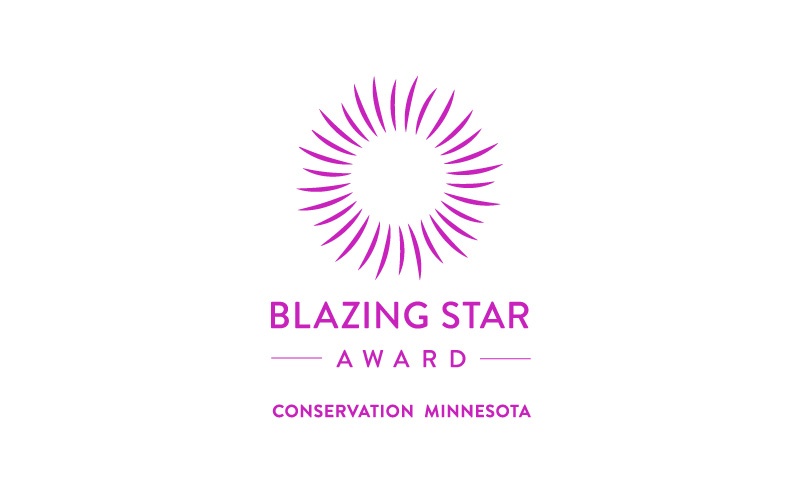The projects and policies that have the greatest impact on people’s lives often come from local government. It’s our cities, counties, Tribal nations, and soil and water conservation districts that are closest to each of us. The staff and elected officials who guide what local government does are often our neighbors who care deeply about the communities they serve. They implement projects that impact transportation, waste, infrastructure, and the landscapes where many of us learn and play.

In recognition of local governments’ work to protect the Great Outdoors, we launched the Blazing Star Award in 2022. The blazing star is a flowering perennial plant native to Minnesota prairies that has characteristics that we celebrate: hardiness, adaptability, beauty, and environmental friendliness. Since the name “Blazing Star” evokes the idea of blazing trails and adaptability, this award acknowledges local governments that engage in exciting and innovative projects that advance conservation, climate resilience, environmental protection, or outdoor recreation opportunities.
Conservation Minnesota’s panel of judges considered 21 projects submitted by local governments from across the state. These projects varied greatly, but all shared the theme of helping protect the Minnesota we love. We are excited to share with you the winners of the 2023 Blazing Star Award:
Hopkins was recognized for mapping heat vulnerability. Using extreme heat data, they focused on areas of the city that experience the highest summer temperatures. They found that these areas are also home to a high number of rental units where the majority of residents are low-income and families of color. This data analysis will help the city plan future projects with the highest impact for those most negatively affected by our warming climate.
Howard Lake was recognized for constructing Minnesota’s first net-zero energy library. The new library will feature active and passive solar energy, locally sourced, sustainable, and/or recycled materials, high efficiency water fixtures, and native plant landscapes. Located near two parks, the library will serve as a central hub for their community, providing learning, safety, and a greater sense of belonging for this city of 2,500 people. They leveraged partnerships and obtained outside resources like T-Mobile’s Hometown Grant to help cover the cost of computers and high-speed internet access.
Sherburne County was recognized for management improvements to Grams Park—the most visited park in the county. They worked to restore 24 acres of native prairie to help at-risk pollinators thrive and provide a platform to teach the public about the importance of native landscapes and pollinators. The county used prescribed burns and sheep and goat grazing to help foster a healthy environment and avoid the use of harmful chemical pesticides in land management. They also created a new natural playscape using sustainable materials with the primary goal of providing an accessible experience for children with limited mobility and sensory processing disorders.
This year’s winners highlight how local government can leverage existing staff, external resources, and unique partnerships to make a difference in people’s lives. By uplifting the work of these local governments, we hope to inspire other communities to implement similarly innovative projects.
If you think your local government has a project worth recognizing, contact me at: avery@conservationminnesota.org.

